The world of sleep disorders can be perplexing, leaving many people tossing and turning into the early hours of the morning. Restless Leg Syndrome, also known as RLS, is one such disorder that can leave individuals feeling restless and uncomfortable. With symptoms ranging from tingling and creeping sensations to a strong urge to move one’s legs, RLS can make it difficult for individuals to get a good night’s sleep. But what exactly is RLS, and what is the link between this disorder and sleep disorders? In this article, we will take a closer look at RLS, explore sleep disorders and their causes, and examine the connection between RLS and poor sleep quality.
What is Restless Leg Syndrome?
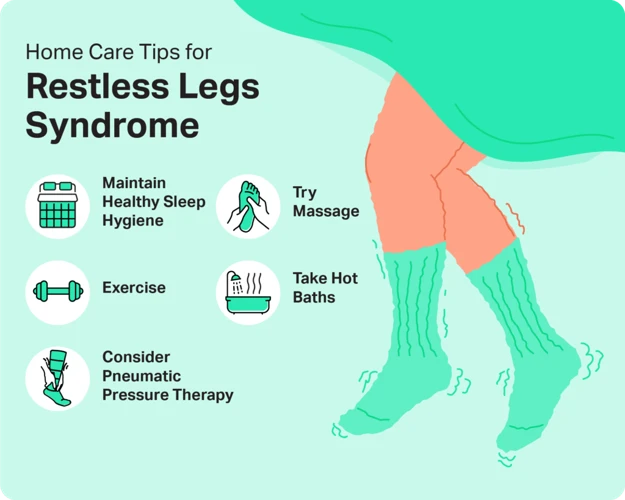
Many people have experienced the frustrating and uncomfortable sensation of an irresistible urge to move their legs, especially when they lay down to sleep at night. This condition is known as Restless Leg Syndrome (RLS) which affects millions of people worldwide. Despite its prevalence, RLS is often misdiagnosed or overlooked, leaving many sufferers unable to find relief from the constant discomfort. In this section, we’ll take a closer look at what RLS is, its symptoms, and what causes it.
Symptoms of RLS
Restless Leg Syndrome (RLS) is a nervous system disorder that affects approximately 10% of the population. RLS is characterized by an uncomfortable sensation in the legs, which can range from tingling, burning, or itching to a feeling of pins and needles or throbbing. These sensations occur primarily at night, when the sufferer is trying to rest. The most common symptoms of RLS include:
- Uncontrollable urges to move the legs: This is one of the classic symptoms of RLS, and is often described as a feeling of restlessness or discomfort in the legs that can only be relieved by moving them.
- Tingling or crawling sensations: Many people with RLS experience unusual sensations in their legs, such as tingling, burning, or crawling. These sensations can be so intense that they make it impossible to sleep.
- Leg discomfort worsening in the evening or at night: RLS symptoms tend to worsen as the day goes on, and are typically at their worst during the evening and at night. This can make it difficult for sufferers to fall asleep, and can even cause them to wake up repeatedly throughout the night.
- Feeling of relief when moving the legs: When a person with RLS moves their legs, the symptoms often decrease or go away entirely. However, as soon as they stop moving, the sensations return.
If you experience any of these symptoms on a regular basis, it is important to speak with your doctor, as they can be a sign of RLS. While there is no cure for RLS, there are a number of treatment options available that can help manage the symptoms and improve quality of life.
Causes of RLS
Restless Leg Syndrome (RLS) is a neurological disorder that affects the legs and occasionally the arms, characterized by unpleasant or uncomfortable sensations that often result in an irresistible urge to move. The exact cause of RLS is unknown in many cases, but possible contributing factors can include:
| Possible Causes of RLS |
|---|
| Genetics: RLS tends to run in families, indicating a genetic component to the condition. |
| Low Iron Levels: Some research has shown that low levels of iron in the brain can cause a disruption in the dopamine system, leading to symptoms of RLS. |
| Chronic Diseases: Chronic diseases such as kidney failure, diabetes, and peripheral neuropathy have been linked to an increased risk of developing RLS. |
| Pregnancy: Pregnant women are also at an increased risk of developing RLS, likely due to hormonal changes and increased blood volume. |
| Medications: Some medications including antihistamines, antidepressants, and antipsychotics have been known to worsen symptoms of RLS. |
| Caffeine and Alcohol: Consuming high amounts of caffeine or alcohol can also trigger or worsen symptoms of RLS. |
While these potential causes of RLS have been identified, it’s important to note that the exact cause can vary from person to person. If you think you may be experiencing symptoms of RLS, it’s recommended to speak with a healthcare provider to determine the best course of action.
Understanding Sleep Disorders
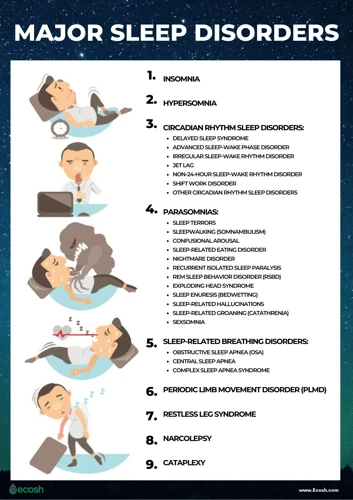
Getting a good night’s sleep is crucial for overall health and well-being. However, for many people, falling asleep and staying asleep can be a frustrating and elusive experience. Sleep disorders are a complex and varied group of conditions that can disrupt the quality, duration, and timing of sleep. It can leave us feeling fatigued, irritable, and even impact our ability to carry out everyday tasks. Understanding the different types and causes of sleep disorders can help individuals seek the appropriate diagnosis and treatment they need to improve their sleep quality and overall health.
Types of Sleep Disorders
There are various types of sleep disorders that can affect individuals. Here are some of the most common ones:
- Insomnia: Insomnia is one of the most prevalent sleep disorders, which makes it difficult to fall asleep or stay asleep. This can result in feeling tired during the day and having difficulty with concentration.
- Sleep Apnea: Sleep apnea is a disorder in which a person’s breathing is repeatedly interrupted while sleeping, which can lead to snoring, frequent awakenings, and gasping for air. This can result in daytime sleepiness, mood changes, and difficulty concentrating.
- Narcolepsy: Narcolepsy is a neurological sleep disorder that causes uncontrollable daytime sleepiness and sudden attacks of sleep. It can also result in hallucinations and sleep paralysis.
- Rapid eye movement (REM) sleep behavior disorder: During REM sleep, a person’s muscles become paralyzed while dreaming. However, some individuals experience a loss of muscle tone, causing them to act out their dreams. This can result in injury to themselves or their partner.
- Restless Leg Syndrome (RLS): RLS is a neurological condition that causes an uncontrollable urge to move the legs, often accompanied by an uncomfortable sensation in the legs. This can disrupt sleep and result in daytime sleepiness.
It is important to talk to a doctor if you are experiencing any of these sleep disorders, as they can have a significant impact on your quality of life. With the right diagnosis and treatment, many individuals can improve their sleep and overall wellbeing.
Causes of Sleep Disorders
One of the main causes of sleep disorders is stress, which can lead to both difficulty falling asleep as well as maintaining sleep throughout the night. Environmental factors such as noise, light pollution, and uncomfortable temperatures can also contribute to sleep problems. Chronic medical conditions such as sleep apnea, restless leg syndrome, and narcolepsy can also cause sleep disturbances.
Additionally, certain medications can affect the quality of sleep, including those for depression, anxiety, hypertension, and allergies. Substance use or abuse, such as alcohol, nicotine, and caffeine, can also disrupt sleep patterns.
Other causes of sleep disorders may include jet lag, shift work, and irregular sleep schedules. Another factor that can cause sleep disorders is the lack of physical activity, leading to an insufficiently tired state of the body. It is therefore important to engage in regular exercise to maintain good sleep habits.
There are many potential causes of sleep disorders, including stress, environmental factors, medical conditions, medications, substance use or abuse, and irregular sleep schedules. It is important to identify the specific cause of one’s sleep disorder in order to develop effective treatment and management strategies.
The Link Between RLS and Sleep Disorders
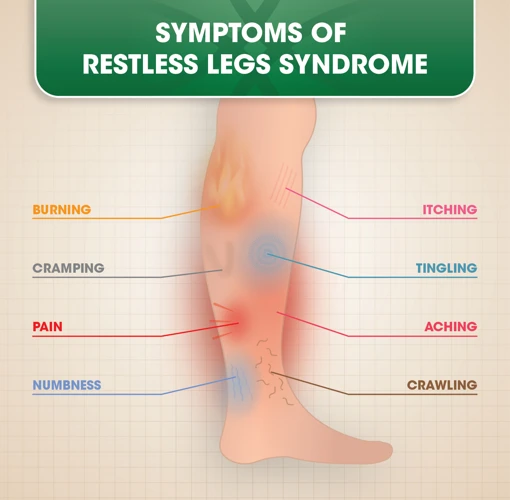
As if struggling with one sleep disorder wasn’t enough, medical professionals have noticed a clear link between Restless Leg Syndrome (RLS) and various other sleep disorders. While sufferers of RLS know firsthand how disruptive the condition can be for their ability to sleep, the connection between RLS and other sleep disorders is a relatively new discovery. What is the impact of RLS on sleep quality, and how does this condition and other sleep disorders relate to each other? In this section, we will dive into the details of the RLS-sleep disorders connection, and explore what research has revealed so far.
The Impact on Sleep Quality
One of the most noticeable impacts of Restless Leg Syndrome (RLS) on the body is the effect it has on sleep quality. Those who suffer from RLS often experience difficulty in falling asleep or staying asleep throughout the night. This can lead to fatigue, irritability, and a decreased overall quality of life.
What are the reasons behind this?
The main reason for the impact on sleep quality is the involuntary leg movements, itching, or tingling that occur with RLS. These sensations can be mild or severe, and are often worse at night, causing the sufferer to have a strong need to move their legs. This can lead to disrupted sleep, as the individual may have to constantly get up and move around, making it challenging to fall back asleep.
What are the consequences?
The consequences of poor sleep quality can be far-reaching. In addition to daytime sleepiness and fatigue, it can also impact mental health, leading to anxiety and depression. Poor sleep quality has also been linked to an increased risk of chronic illnesses, such as heart disease and diabetes.
How to improve sleep quality?
There are several ways to improve sleep quality for those suffering from RLS. This may include avoiding caffeine and alcohol, as well as implementing a regular sleep schedule. Additionally, exercise and relaxation techniques, such as yoga and meditation, can help to reduce stress, which may exacerbate RLS symptoms.
What about medication?
Medication may also be prescribed by a doctor to help manage RLS symptoms and improve sleep quality. However, it’s important to remember that medication isn’t always the best solution and may have side effects. It’s important to discuss any concerns or questions with a healthcare provider before starting any medication for RLS or sleep disorders.
The impact of RLS on sleep quality can be challenging, but with the right management techniques and lifestyle changes, it is possible to improve sleep quality and overall quality of life.
The Connection between Iron Deficiency and RLS
One of the links between Restless Leg Syndrome (RLS) and sleep disorders is the connection between iron deficiency and RLS. Iron is an important mineral which helps in the production of dopamine, a neurotransmitter that plays a crucial role in the functioning of the nervous system. Dopamine is the chemical messenger that signals the brain to control body movements, mood, and behavior. In people with RLS, there is a deficiency of dopamine in the brain.
Iron is essential for the metabolism of dopamine, and low levels of this mineral can lead to a reduction in dopamine production, which could be a potential cause of RLS. Studies have shown that people with RLS have lower levels of iron in their blood and the brain. Low iron levels in the brain can disrupt the dopamine signaling pathways, leading to RLS symptoms.
To further establish the link between iron and RLS, studies have also shown that iron supplementation can reduce the severity of RLS symptoms, especially in people with low iron levels. In fact, iron supplementation is one of the common treatment options for RLS.
Below is a table that summarizes the connection between iron and RLS:
| Iron and RLS | |
|---|---|
| Iron is important for dopamine production in the brain | Low iron levels may cause a reduction in dopamine production, leading to RLS symptoms |
| People with RLS have lower levels of iron in their blood and the brain | Low iron levels in the brain can disrupt dopamine signaling pathways, leading to RLS symptoms |
| Iron supplementation can reduce the severity of RLS symptoms, especially in people with low iron levels | Iron supplementation is a common treatment option for RLS |
It is essential to maintain adequate levels of iron in the body to reduce the risk of RLS and improve sleep quality. People who experience RLS symptoms should consult a doctor and get their iron levels checked. In addition to supplementation, including iron-rich foods in the diet can also help prevent iron deficiency and reduce RLS symptoms.
The Role of Dopamine
Dopamine is a neurotransmitter that plays a crucial role in the body’s movement control and reward system. It is also involved in the regulation of our sleep and wake cycle. The deficiency of dopamine in the brain has been linked to restless leg syndrome (RLS) and other sleep disorders.
Below are the ways dopamine plays a role in RLS and sleep disorders:
- Dopamine is responsible for the coordination of movement and muscle control. In RLS, the low levels of dopamine can disrupt normal muscle control, leading to the uncontrollable urge to move the legs.
- Dopamine affects the body’s circadian rhythm or sleep-wake cycle, which controls our sleep pattern. When dopamine levels are altered, it can lead to sleep disorders, such as insomnia or hypersomnia.
- Some medications that increase dopamine levels in the brain have been found to be effective in treating RLS and sleep disorders. These drugs can also reduce the frequency and intensity of leg movements during sleep.
- Dopamine agonists are a class of drugs that increase dopamine activity in the brain. These medications are an effective treatment for RLS and have been shown to reduce the severity of symptoms in patients with sleep disorders.
- Iron deficiency can also affect dopamine levels in the brain, leading to RLS and other sleep disorders.
It’s important to note that although dopamine plays an essential role in the development of RLS and sleep disorders, there are other factors involved, such as genetic and environmental factors. Proper diagnosis and treatment of RLS and sleep disorders require a comprehensive evaluation by a qualified healthcare professional.
Diagnosis and Treatment
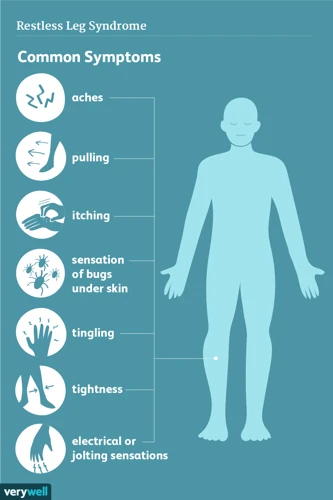
As we’ve seen, Restless Leg Syndrome (RLS) can greatly affect the quality of your sleep. If you’ve been experiencing symptoms of RLS or other sleep disorders, it’s important to seek out a proper diagnosis so that you can begin treatment. Thankfully, there are a variety of options available for managing RLS and sleep disorders. Let’s dive into the process of diagnosing and treating these conditions.
Diagnosing RLS and Sleep Disorders
To diagnose Restless Leg Syndrome (RLS), a doctor will typically review the patient’s medical history and symptoms. There is no specific test for RLS, but some diagnostic tools may include:
| Diagnostic Tool | Description |
|---|---|
| Physical Exam | A doctor will look for visible symptoms of RLS, such as involuntary leg movements or twitching. They may also check for signs of iron deficiency. |
| Medical History | The doctor will ask about the patient’s symptoms, including when they occur and how frequently. They may also ask about family history and medications the patient is taking. |
| Sleep Study | A sleep study, also known as a polysomnogram, can help diagnose RLS by measuring the patient’s brain waves, heart rate, and muscle activity during sleep. |
Diagnosing Sleep Disorders can also be challenging, as many different factors can contribute to poor sleep quality. A doctor may use a combination of diagnostic tools to identify the underlying cause of a patient’s sleep problems:
| Diagnostic Tool | Description |
|---|---|
| Sleep Diary | A patient may be asked to keep a record of their sleep patterns, including the time they go to bed and wake up, how long it takes them to fall asleep, and how often they wake up during the night. |
| Physical Exam | A doctor will look for signs of underlying medical conditions that could be affecting the patient’s sleep, such as sleep apnea or restless leg syndrome. |
| Polysomnogram | A sleep study can help diagnose sleep disorders by measuring brain waves, heart rate, and muscle activity during sleep. |
It’s essential to seek medical attention if you’re experiencing symptoms of RLS or sleep disorders to receive proper diagnosis and treatment.
Treatments for RLS and Sleep Disorders
There are several treatments available for both Restless Leg Syndrome (RLS) and sleep disorders. The type of treatment that is recommended largely depends on the underlying cause of the condition. Here are some of the common treatments:
| Treatment | Description |
|---|---|
| Medications | There are a few medications that can be used to treat RLS, such as dopamine agonists and iron supplements. For sleep disorders, medications such as melatonin and prescription sleep aids may be prescribed by doctors. |
| Lifestyle changes | Exercise: Regular exercise can help reduce RLS symptoms and improve sleep quality. However, exercise should be done earlier in the day as it can increase alertness in the evening.Stress reduction: Stress and anxiety can worsen RLS and sleep disorders. Finding ways to reduce stress, such as through meditation or deep breathing exercises, can be helpful.Sleep hygiene: Creating a consistent sleep schedule and preparing a restful sleep environment are important for promoting better sleep. |
| Medical procedures | In severe cases of RLS, medical interventions such as deep brain stimulation or intravenous iron infusions may be recommended. For sleep disorders, treatments such as continuous positive airway pressure (CPAP) or surgery to remove excess tissue in the throat may be necessary. |
It’s important to work with a healthcare provider to determine the best treatment plan for RLS and sleep disorders. Through a combination of lifestyle changes and medical interventions, it is possible to manage symptoms and improve sleep quality.
Lifestyle Changes for Better Sleep
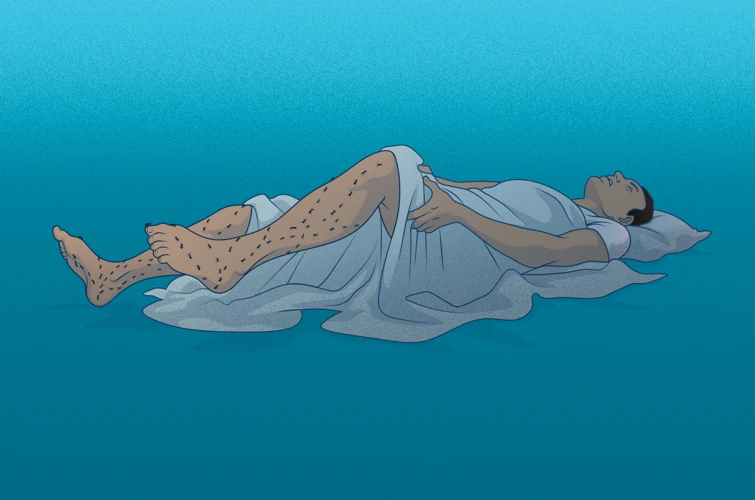
Adopting healthy lifestyle changes can be an effective way to improve sleep quality and manage symptoms of Restless Leg Syndrome (RLS) and other sleep disorders. Here are some lifestyle changes you can make to improve your sleep:
Follow a Sleep Schedule: Try to go to bed and wake up at the same time every day, even on weekends. This can help regulate your body’s internal clock and improve sleep quality.
Avoid Stimulants: Nicotine, caffeine, and alcohol can interfere with sleep quality, so it is recommended to avoid them or limit their consumption, especially in the evening.
Exercise Regularly: Regular physical activity can help relieve the symptoms of RLS and other sleep disorders, but avoid exercising close to bedtime as it can increase alertness and make it difficult to fall asleep.
Relaxation Techniques: Stress and anxiety can disrupt sleep, so finding ways to relax before bedtime can be helpful. Try deep breathing, progressive muscle relaxation or meditation to calm both your mind and body.
Create a Comfortable Sleep Environment: Ensure that the bedroom environment is conducive to sleep, which includes maintaining the right temperature, minimizing noise and light, and investing in comfortable bedding and pillows.
Avoid Napping: Napping during the day can make it harder to fall asleep at night. However, if you really need to take a nap, limit it to 20-30 minutes.
While lifestyle changes can positively impact sleep quality, it may not necessarily solve the underlying causes of sleep disorders such as RLS. A combination of lifestyle changes and medical treatments may be necessary for effective management of sleep disorders.
Prevention of RLS and Sleep Disorders
It is important to take steps to prevent Restless Leg Syndrome (RLS) and sleep disorders as they can greatly impact the quality of life. Here are some ways to prevent them:
1. Exercise regularly: Regular exercise can help alleviate symptoms of RLS and improve overall sleep quality. However, it is important to avoid exercising too close to bed time as it may interfere with sleep.
2. Establish a regular sleep routine: Going to bed and waking up at the same time each day helps regulate the body’s sleep-wake cycle, leading to better sleep quality.
3. Avoid caffeine and alcohol: Consuming caffeine and alcohol close to bedtime can disrupt sleep, so it is best to avoid them especially if you have RLS.
4. Maintain a healthy diet: Consuming a diet low in processed foods, fats and sugar, and high in fruits and vegetables has been linked to better sleep quality.
5. Improve sleep environment: The sleep environment plays a crucial role in ensuring good sleep quality. Creating a comfortable and relaxing sleep environment, with comfortable bedding, lighting, and temperature is key.
6. Manage stress: High levels of stress can negatively impact sleep quality and aggravate RLS symptoms. Practicing relaxation techniques such as meditation, deep breathing, and yoga can help reduce stress and improve sleep quality.
By taking these preventive measures, individuals can reduce their risk of developing RLS and sleep disorders and improve their overall health and well-being.
Conclusion
In conclusion, the link between Restless Leg Syndrome (RLS) and sleep disorders cannot be overlooked. The impact that RLS can have on an individual’s quality of sleep is significant, which in turn can affect their overall health and well-being. Additionally, the connection between iron deficiency and RLS highlights the need for individuals to pay attention to their nutritional intake.
Diagnosis and treatment options are available for both RLS and sleep disorders, and it’s important for individuals to seek medical attention if they suspect they may be affected by either condition. Lifestyle changes, such as limiting caffeine and alcohol intake and establishing a regular sleep routine, can also improve sleep quality.
Prevention of RLS and sleep disorders may not always be possible, due to genetic or medical factors, but maintaining a healthy lifestyle can certainly minimize the risk. Overall, it’s crucial for individuals to prioritize sleep as a key component of their health and wellness, and to seek help if they experience any symptoms of RLS or sleep disorders.
Frequently Asked Questions
What are the treatment options for RLS?
The treatment options for RLS include medication, lifestyle changes, and alternative therapies such as acupuncture and massage.
Can RLS be cured?
There is no known cure for RLS, but symptoms can be managed with treatment.
Do all sleep disorders cause RLS?
No, not all sleep disorders cause RLS. RLS is often associated with periodic limb movement disorder.
What are the lifestyle changes that can improve sleep quality?
Lifestyle changes that can improve sleep quality include practicing good sleep hygiene, avoiding caffeine and alcohol, and establishing a consistent sleep schedule.
What medications are used to treat sleep disorders?
The medications used to treat sleep disorders vary depending on the type of disorder, but common treatments include sedatives and sleeping pills.
Can RLS symptoms worsen over time?
Yes, RLS symptoms can worsen over time, particularly if left untreated.
Can stress and anxiety cause RLS?
While stress and anxiety can contribute to sleep disturbances, there is no direct link between these conditions and RLS.
Are there any natural remedies for RLS?
Yes, natural remedies for RLS include taking supplements such as iron, magnesium, and folic acid, and practicing relaxation techniques such as yoga and meditation.
What is the relationship between RLS and pregnancy?
RLS is common during pregnancy, particularly in the third trimester.
What is the best way to prevent RLS?
The best way to prevent RLS is to maintain good sleep hygiene, exercise regularly, and manage stress levels.








